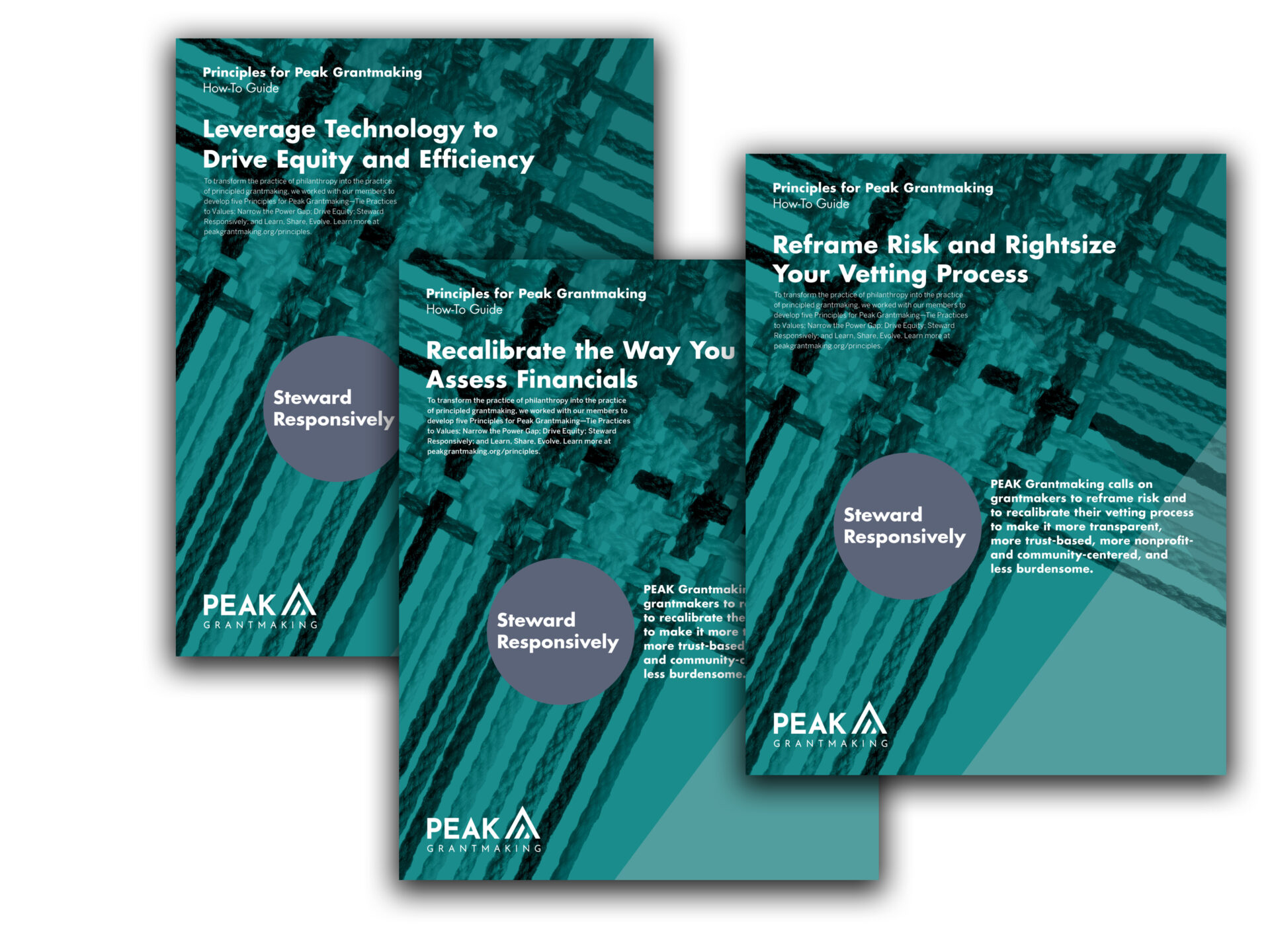Transformational Grantmaking is Most Needed in a Crisis

The COVID and social justice crises are requiring us to think of what we have been doing to effectively and nimbly support change. It is an interesting time, a scary time, and most importantly, a time in which we, as a sector, should be leaning in and taking incredible risks to create and support justice and equity.
The sector has generally subscribed to certain grantmaking expectations, rituals, and routines for years, embracing them as things that have always been done and should continue. We have thus tended to uniformly engage in grantmaking, often questioning the edges of our practices, but rarely the core. 2020 presents a key moment to fundamentally reconsider how we engage in grantmaking. Indeed, risk protocols should be challenged, new practices should be welcomed, and innovation should be explored in order to cause seismic shifts of power towards marginalized communities that have been historically left out of conversations.
Here, I highlight three areas of focus within grantmaking for foundations interested in creating and supporting this kind of transformation.
First, ensure that the grantmaking process is accessible.
The grantmaking process is critical because it is how a foundation’s values are meaningfully incorporated into its grantmaking. A key consideration to creating an accessible process is understanding how a foundation has used or leveraged technology within that process. For example, can the grant application and materials be completed through a centralized portal that stores information about the grant that both the foundation and grantee can access? Can grantees sign award letters electronically instead of having to mail back a signed original? And is there an electronic payment process that gets funds to grantees quickly and does not involve grantees having to cash paper checks?
Another accessibility consideration is developing a shared, objective understanding of risk. This understanding can then be used to create grant risk profiles. These profiles can inform whether all grant agreements require signature from both the grantee and the foundation or if the grant can be made after the foundation decides to award the grant, which can make the process more efficient. This shared understanding of risk will also allow a foundation to determine whether it has the right decision makers within the process at the right time. If, for example, a foundation has its board approving every grant regardless of the amount or proposed activities, this type of decision-making may be creating inefficiencies within the grantmaking process, ultimately impacting how quickly funds are awarded. Creating a more accessible process will thus help create efficiency in how grants are awarded.
Second, start providing more flexible funding and support.
General support is frequently discussed as a sector best practice, but many foundations still have not generally adopted a more flexible funding approach. Given the tremendous needs that have surfaced within our current environment, foundations need to shift to more flexible funding awards to allow grantees to creatively approach risk and have the confidence to perform in the face of crisis. Indeed, grantees need funding that allows them to build their capacity at any time. When project support grants that do not focus on supporting the general needs of an organization are used as primary funding tools, they can interrupt an organization’s ability to strengthen its infrastructure and thus ultimately reduce the viability of the same projects that are the focus of the restricted funding.
To this end, foundations should transition their funding to more unrestricted, flexible funding – e.g., institutional support, general support, capacity building – and allow grantees to use this funding to build operating reserves and endowments. The sector should not expect innovation, experimentation, or accountability to lofty outcomes without this type of flexible funding. Only when organizations believe they have a funding safety net can we have organizations that perform as though they have a funding safety net. By not providing this kind of flexible funding, foundations support the creation of organizations that are too afraid to take risks, even calculated ones, because they do not know where they will receive funding to support their basic operational and organizational needs. In essence, providing solely restricted funding teaches organizations to be less nimble, less flexible, and take a one-dimensional approach to risk – avoiding it. On the other hand, flexible funding encourages an organization to be brave – to show up as its most authentic self – to effectively problem-solve alongside the communities it serves.
Third, expand the types of grantees that are supported.
If a foundation provides funding solely to U.S. public charities because it believes these organizations play a unique role in its work, given their status, then limiting funding only to these organizations makes sense. If no direct, strategic connection between an organization’s tax status and a foundation’s grant making exists, however, then the foundation should explore expanding the types of grantees it supports. Too often, foundations are guided by tax considerations – avoiding enhanced due diligence procedures, for example – to determine how they will engage in grantmaking and who their grantees should be. In this moment, that self-imposed limitation will limit a foundation’s flexibility and ability to innovate while advancing its mission.
Particularly in this time of COVID and social unrest, groups of individuals have come together to make change in nontraditional ways. Foundations should thus consider the critical roles that nonprofit organizations that are not public charities, fiscally sponsored projects, community-based organizations that may not have tax-exempt status, organizations that are not referred to them by their networks, and social-impact vehicles may play within the charitable ecosystem they are supporting to inform their grant making.
These three areas of focus illustrate key changes that foundations can make to their practices, work, and operations to ensure they are responsive and nimble, while also preserving their organizational integrity from both a legal and compliance perspective. Embracing just one of these areas can have a transformational outcome for a foundation, its grantees, and the vulnerable and marginalized communities they serve.



